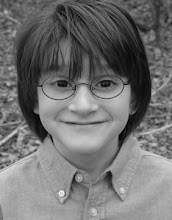1. The comedy
 Night of the Museum, first and foremost, is a comedy. It has elements of action, adventure, Dick Van Dyke, etc., but what it never stops doing is being funny. The source comes from its amazing cast and crew. Specifically, its writing crew of Robert Ben Garant and Thomas Lennon, veterans writers of Reno 911! and cast members of MTV's The State (never seen either), who each give their funniest to this ingenious undertaking of a film.
Night of the Museum, first and foremost, is a comedy. It has elements of action, adventure, Dick Van Dyke, etc., but what it never stops doing is being funny. The source comes from its amazing cast and crew. Specifically, its writing crew of Robert Ben Garant and Thomas Lennon, veterans writers of Reno 911! and cast members of MTV's The State (never seen either), who each give their funniest to this ingenious undertaking of a film.Better than the writing, however, the films are riddled with incredible comedic talent on screen. Immediately, the mind jumps to legendary Robin Williams, who plays the iconic twenty-sixth President of the United States Theodore Roosevelt. It's actually quite a serious role, yet he sneaks in his gift of humor in many a scene. The man, of course, is an acting genius!
 Even further, though, Museum has taken comedians from every avenue and grafted them in this somewhat odd historical fiction. Everyone from Ricky Gervais, Jonah Hill, Bill Hader, Hank Azaria, and, in this latest edition, Pitch Perfect's Rebel Wilson.
Even further, though, Museum has taken comedians from every avenue and grafted them in this somewhat odd historical fiction. Everyone from Ricky Gervais, Jonah Hill, Bill Hader, Hank Azaria, and, in this latest edition, Pitch Perfect's Rebel Wilson.My personal favorite, though, are the miniatures played by Steve Coogan and Owen Wilson, who make use of their size to create hilarious action scenes of less-than-epic proportions.
All in all, the comedy used here puts it in a category all of its own.
2. The history
Not exactly something you'd find in a usual film, but Night of the Museum's titular setting is most useful when sugarcoated by its accurate historical content. Each film contains a wealth of great figures from every point in history imaginable and surprisingly educates better than many a purposely-educational program.
A great example of its use of world history characters can be found primarily in the sequel Battle of the Smithsonian. Of course, in the world's largest museum, nearly every figure imaginable made an appearance. Aiding the villain Kahmunrah is none other than Al Capone, Napoleon Bonaparte, and Ivan the Terrible (or, rather, Ivan the Awesome).
Also making appearances are Abraham Lincoln, Joey Motorola, Albert Einstein, and even Oscar the Grouch, because y'know... why not?! The new film will also make use of London's greatest figures, most notably Sir Lancelot.
Not only does everyone here appear but they give legitimate historical information. Roosevelt, in particular, regularly has noted the accomplishments of the President he depicts. Likewise, in order to know his way around the museum, Ben Stiller's Larry Daley looks up the informations of the exhibits online (we'll overlook the fact it was on Wikipedia...)
Through it all, the historical content drives the plot, naturally of a history-based film.
3. The heart
 This one's not so easy to describe, but the series has been known for its heart. While being a mix of a little bit of action and a little bit of comedy, it doesn't always boast it's biggest strength: it's emotional content.
This one's not so easy to describe, but the series has been known for its heart. While being a mix of a little bit of action and a little bit of comedy, it doesn't always boast it's biggest strength: it's emotional content.The first film shows this a lot plainer in its story of the divorce between Larry and his ex-wife. Therein, Larry attempts to keep the relationship between him and his son intact. Though, disappointment comes in every directions, hitting Nicky Daley the hardest when his father is temporarily fired from the museum. The strain in this relation causes tension but the bond grows stronger and stronger with each moment they spend on their adventure to recover the tablet of Akmunrah.
The second is a little less of the main plot, yet it does a better job at showing emotion. This one chronicles the budding love between Larry and wax Amelia Earhart (Amy Adams). Amy Adam comes on strong and builds a friendship/relationship between them, but Larry difficultly refuses the flattering advances. The difficulty of the situation comes from her wax nature and the hard way of breaking that to Earhart as the go about their main conflict.
They aren't overly-advertised parts, but the emotion between all the characters gives them three-dimensionality and makes the film feel relatable to the audience. In that way, it makes the best proof why Night at the Museum works.
Hope you liked this little list thing. Again, it's another idea. No real confirmation these types of posts'll become common place 'round here, but if you read it, hope you like it. Thanks for reading!



No comments:
Post a Comment